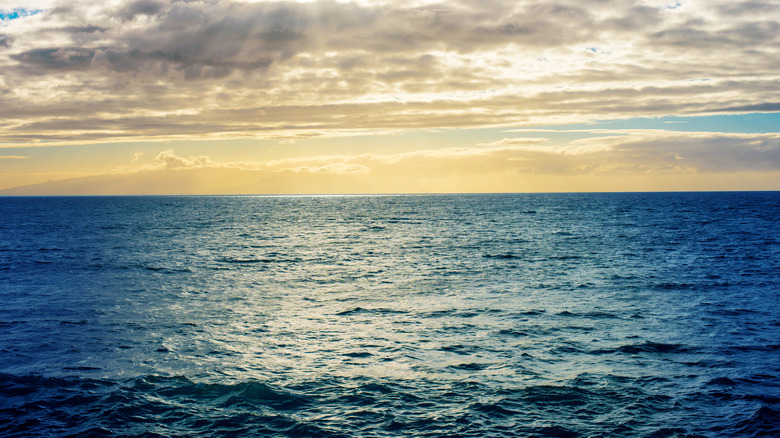Where Will The International Space Station Go When It's Deorbited In 2030?
All good things must come to an end, and the astonishing life of the International Space Station is no exception. First launched in 1998 and continuously occupied since 2000, the ISS is used for a wide array of experiments and has hosted nearly 300 astronauts from 26 different countries in an impressive display of international cooperation. Costing over $100 billion to build and operate, the ISS is frequently cited as the most expensive human creation in history, but no level of investment could make it last forever, and in the near future, it will meet its end the watery grave of the ocean.
After a quarter century in action, the ISS is wearing down. Not only that, but in a world where technological advancements are coming at an exponentially faster and faster pace, the technology built into the ISS is becoming outdated. Furthermore, life in orbit has subjected the station to a type of wear-and-tear beyond what any earthly object could handle. As the ISS travels in and out of sunlight without the protection of Earth's atmosphere, it experiences repeated and extreme hot-and-cold shifts that take a toll on its exterior. The frequent docking and undocking of transport vehicles and repeated orbital boosts required to keep the station in orbit also deal damage over time.
The five space agencies that jointly run the ISS (the United States, Europe, Canada, Russia, and Japan) are progressing towards a plan to decommission the station in 2030, but they can't just leave it floating up there. The ISS has to go somewhere else, and that somewhere else will be the bottom of the ocean.
A watery grave for the ISS
NASA and its partner agencies debated multiple approaches to decommissioning the International Space Station. One early idea was to move the ISS to even higher orbit and just leave it there, but that would be very risky because, without consistent maintenance, the station could break down and leave behind parts that could rain down on Earth, causing serious destruction. They also considered disassembling the station in space and bringing it home piece by piece, but this process would be too expensive and complex. The only realistic end to the ISS is to bring the whole thing crashing down to Earth at once, but if that's going to happen, the agencies need to ensure that it doesn't land on a populated area.
Fortunately, Earth's atmosphere will help to reduce the danger by incinerating a large portion of the ISS as it descends. This will happen because the speedy fall from space will create enough friction between the station and the surrounding air to start a fire. However, many parts of the ISS will survive this breakup, and those are destined for a point in the South Pacific Ocean called Point Nemo. Considered the most remote location on Earth, Point Nemo is more than 1,500 miles from the nearest landmass, and it has been found to contain eerily little marine life. For decades, it has served as a landing point for decommissioned satellites, and the ISS is destined to join this technological graveyard. The question is, how does it get there?
How the deorbiting process will work
The deorbiting process will take multiple steps. After the final crew of astronauts departs, the ISS will be left in space for another year, over which time its orbit will naturally drop due to lack of maintenance. After that, a deorbit vehicle will fly up and attach itself to the station. After lining up the station with its target destination in the South Pacific, the deorbit vehicle will give the ISS one final push down into Earth's atmosphere, initiating its final descent.
The ISS won't be the first space station to meet its end at Point Nemo. The famous Soviet space station Mir crashed into the same watery grave, but it was nowhere near as large as the ISS, and a deorbiting of this scale is unprecedented. To get the job done, NASA has commissioned a totally new deorbit vehicle, which will be designed by SpaceX. This move highlights the growing presence of private companies in space, which will be key to what comes after the ISS is gone.
NASA has announced that it will not create the replacement for the ISS. Instead, a new order is set to be established, in which private companies operate space stations. Meanwhile, other countries look to join the crowd in space. China's Tiangong Space Station was launched in 2021, and it seems clear now that the future of space exploration lies in multiple stations, not one central hub like the ISS.


